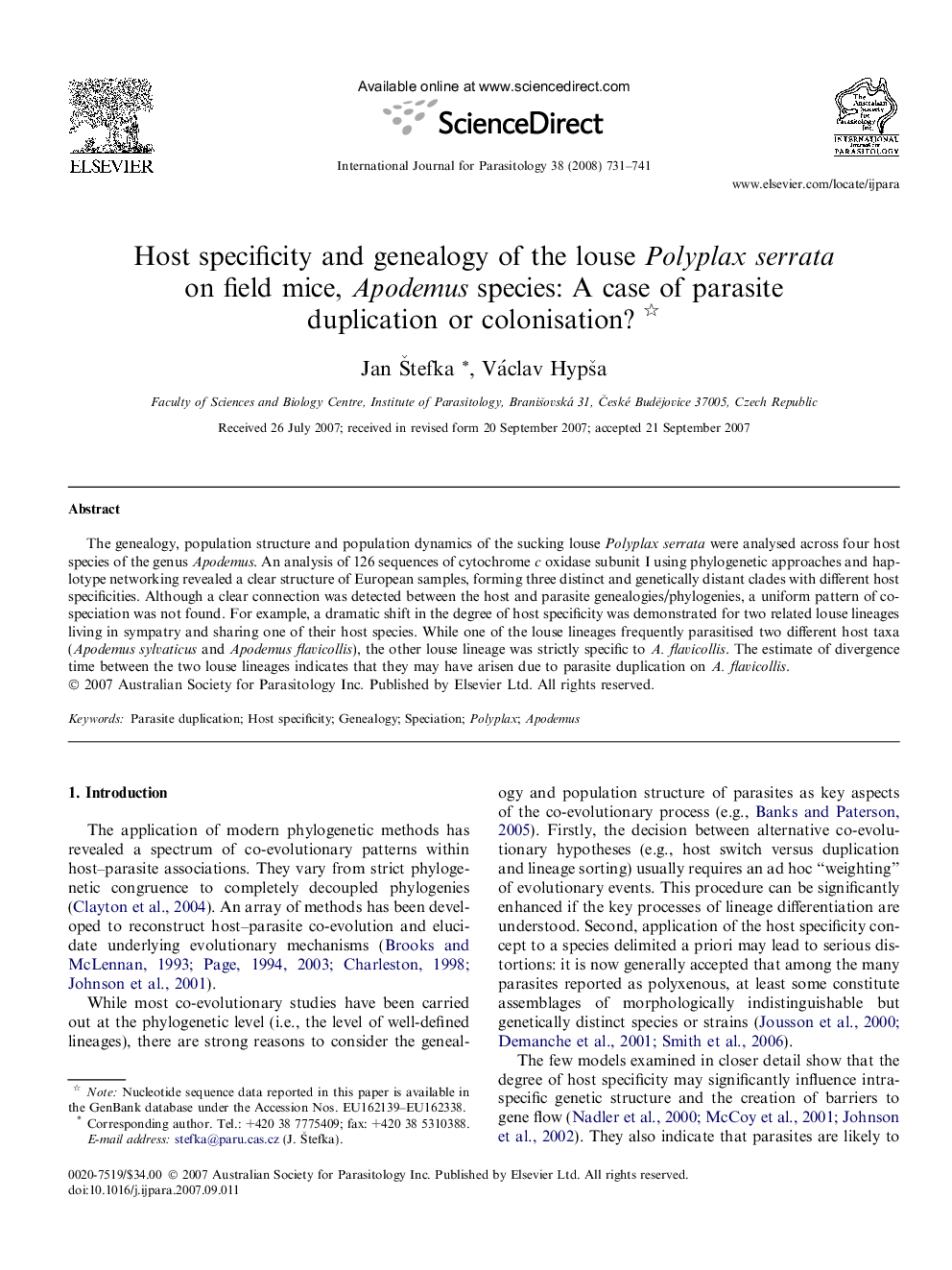| Article ID | Journal | Published Year | Pages | File Type |
|---|---|---|---|---|
| 5789546 | International Journal for Parasitology | 2008 | 11 Pages |
Abstract
The genealogy, population structure and population dynamics of the sucking louse Polyplax serrata were analysed across four host species of the genus Apodemus. An analysis of 126 sequences of cytochrome c oxidase subunit I using phylogenetic approaches and haplotype networking revealed a clear structure of European samples, forming three distinct and genetically distant clades with different host specificities. Although a clear connection was detected between the host and parasite genealogies/phylogenies, a uniform pattern of co-speciation was not found. For example, a dramatic shift in the degree of host specificity was demonstrated for two related louse lineages living in sympatry and sharing one of their host species. While one of the louse lineages frequently parasitised two different host taxa (Apodemus sylvaticus and Apodemus flavicollis), the other louse lineage was strictly specific to A. flavicollis. The estimate of divergence time between the two louse lineages indicates that they may have arisen due to parasite duplication on A. flavicollis.
Related Topics
Life Sciences
Immunology and Microbiology
Parasitology
Authors
Jan Å tefka, Václav HypÅ¡a,
